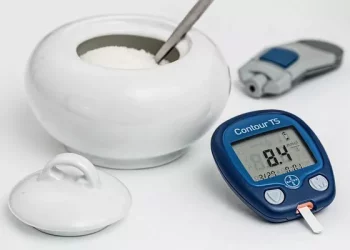Diabetes is a chronic condition that requires careful management of blood sugar levels to prevent complications. One of the central elements in controlling diabetes is diet. A diabetic diet emphasizes controlling carbohydrate intake, balancing nutrients, and consuming foods that contribute to overall health without causing blood sugar spikes. However, many people with diabetes wonder if there are any foods they can eat “freely” or without restriction. This article will explore the concept of “free” foods, the principles behind food choices for diabetics, and how to create a balanced approach to nutrition.
The Concept of “Free Foods” in Diabetes Management
The term “free foods” is commonly used in diabetes care to refer to foods that can be eaten in large quantities without significantly affecting blood glucose levels. However, the concept is not as simple as it might seem. There are no truly “free” foods for people with diabetes, as every food consumed can affect the body’s insulin response and blood sugar levels to some degree. Instead, the term typically refers to foods that are low in carbohydrates and calories, making them less likely to cause a significant spike in blood sugar.
The Role of Carbohydrates in Diabetes
Carbohydrates are the primary macronutrient that affects blood sugar levels. When carbohydrates are consumed, they are broken down into glucose (sugar) in the digestive system, which then enters the bloodstream. In people with diabetes, the body either doesn’t produce enough insulin (as in type 1 diabetes) or doesn’t use insulin effectively (as in type 2 diabetes). As a result, the glucose from food can accumulate in the bloodstream, leading to high blood sugar levels. Therefore, understanding how different types of carbohydrates affect blood sugar is crucial for managing diabetes.
Carbohydrates are classified into three main types:
Simple Carbohydrates: These are sugars found in processed foods, sweets, sugary beverages, and refined grains. They are digested quickly, causing rapid spikes in blood sugar.
Complex Carbohydrates: These are found in whole grains, legumes, vegetables, and fruits. Complex carbohydrates take longer to digest and cause a slower, more controlled rise in blood sugar.
Fiber: This type of carbohydrate is not digested by the body, meaning it does not contribute to blood sugar levels. Fiber helps to slow the absorption of glucose from other carbohydrates and can aid in blood sugar management.
Low-Carb and “Free” Foods for Diabetics
While there is no such thing as a food that diabetics can eat freely without any impact on their blood sugar levels, there are certain foods that are low in carbohydrates and calories, making them better choices for managing blood sugar. These foods tend to have minimal effects on glucose levels and can be eaten more freely, but portion control and balance with other foods are still important.
Non-Starchy Vegetables
Non-starchy vegetables are an essential part of a diabetic diet. These vegetables are low in calories and carbohydrates and are packed with vitamins, minerals, fiber, and antioxidants. They are also high in water content, which helps with hydration.
Some examples of non-starchy vegetables that can be consumed freely (in reasonable portions) include:
- Leafy greens (spinach, kale, arugula, lettuce)
- Broccoli
- Cauliflower
- Cucumbers
- Zucchini
- Bell peppers
- Mushrooms
- Asparagus
- Brussels sprouts
- Green beans
- Tomatoes (though technically a fruit, they are commonly included as a vegetable in meals)
These vegetables are rich in fiber and water, which help to stabilize blood sugar levels and promote feelings of fullness, making them excellent choices for diabetics.
Herbs and Spices
Herbs and spices are naturally low in calories and carbohydrates and can be used freely to add flavor to meals without impacting blood sugar levels. They also offer numerous health benefits due to their antioxidant and anti-inflammatory properties.
Some beneficial herbs and spices for diabetics include:
Cinnamon: May help improve insulin sensitivity and lower blood sugar.
Turmeric: Contains curcumin, which has anti-inflammatory properties that can aid in reducing the risk of complications related to diabetes.
Ginger: Known for its ability to improve digestion and potentially reduce blood sugar spikes.
Garlic: Contains compounds that may help regulate blood sugar levels and reduce inflammation.
Oregano, basil, and thyme: All of which are low in carbs and provide antioxidants that support overall health.
These herbs and spices can be added liberally to dishes without raising blood sugar levels, making them excellent tools for enhancing flavor and nutritional value.
Lean Proteins
Proteins do not have a significant impact on blood sugar levels, so lean sources of protein can be eaten freely in moderation. Protein helps to stabilize blood sugar levels by slowing the absorption of glucose and providing a sustained source of energy.
Some examples of lean protein sources include:
- Skinless poultry (chicken, turkey)
- Fish (especially fatty fish like salmon, trout, and sardines, which are also high in omega-3 fatty acids)
- Eggs (in moderation)
- Plant-based proteins (tofu, tempeh, lentils, chickpeas, and beans)
- Low-fat dairy (such as plain Greek yogurt, cottage cheese, and milk)
While these proteins have minimal direct impact on blood glucose, portion control is still necessary to prevent overconsumption of calories and fat, which can contribute to weight gain and other health complications over time.
Nuts and Seeds
Nuts and seeds are low in carbohydrates and provide healthy fats, fiber, and protein, making them excellent options for diabetics. However, they are also calorie-dense, so while they can be consumed freely in small portions, it is essential to avoid overeating them.
Some examples of diabetic-friendly nuts and seeds include:
- Almonds
- Walnuts
- Pistachios
- Chia seeds
- Flaxseeds
- Pumpkin seeds
- Sunflower seeds
Nuts and seeds are also rich in antioxidants, magnesium, and omega-3 fatty acids, all of which contribute to better diabetes management. They can be eaten as snacks or added to salads, smoothies, and yogurt.
Berries
Fruits are often a concern for people with diabetes because they contain natural sugars (fructose), which can raise blood sugar levels. However, some fruits, particularly berries, are lower in sugar and higher in fiber and antioxidants, making them suitable for diabetics in moderation.
Berries such as strawberries, raspberries, blackberries, and blueberries can be consumed in small to moderate amounts without causing significant blood sugar spikes. They are rich in vitamins, antioxidants, and fiber, which help to manage blood sugar and improve heart health.
Avocados
Avocados are unique among fruits because they are low in carbohydrates and rich in healthy fats, particularly monounsaturated fats. These fats help improve insulin sensitivity, reduce inflammation, and contribute to better heart health. Avocados are also high in fiber, making them an excellent choice for stabilizing blood sugar levels.
A small serving of avocado can be added to salads, sandwiches, or eaten as a spread. Despite their health benefits, they are calorie-dense, so portion control is important.
Foods to Avoid, Even if They Are Low-Carb
While certain foods are low in carbohydrates and can be eaten freely in moderation, it is important to remember that diabetes management is not just about avoiding carbohydrates. It is also about avoiding foods that can negatively impact overall health and contribute to complications related to diabetes, such as heart disease, high blood pressure, and kidney problems.
Some foods to avoid or limit include:
Processed meats: High in unhealthy fats and sodium, which can increase the risk of heart disease.
Refined grains: White bread, white rice, and pasta made from refined grains are quickly digested and can cause rapid spikes in blood sugar levels.
Sugary beverages: Soda, fruit juices, and sweetened drinks can cause rapid spikes in blood sugar and contribute to weight gain.
Trans fats: Found in many processed and fried foods, trans fats increase the risk of heart disease and insulin resistance.
High-fat dairy: Full-fat cheeses, butter, and cream can contribute to excessive calorie intake and increase the risk of cardiovascular disease.
The Importance of Portion Control
Even when consuming foods that are low in carbohydrates, diabetics must still be mindful of portion sizes. Eating large quantities of any food—whether it’s a low-carb food like vegetables or a high-protein food like fish—can contribute to overeating and lead to weight gain. Portion control is a cornerstone of diabetes management and should be practiced even with “free” foods.
The plate method is a useful tool for portion control. It involves dividing your plate into three sections: half of the plate should be filled with non-starchy vegetables, one-quarter with lean proteins, and one-quarter with carbohydrates, such as whole grains or starchy vegetables.
Conclusion
While there are no foods that diabetics can eat freely without any consideration of their effects on blood sugar, there are many foods that can be consumed in larger quantities with minimal impact on glucose levels. These foods include non-starchy vegetables, lean proteins, nuts, seeds, and certain fruits like berries. However, managing diabetes effectively requires more than just choosing the right foods—it involves mindful portion control, balancing macronutrients, and incorporating foods that support overall health. By adopting a well-rounded approach to nutrition, individuals with diabetes can lead healthy, fulfilling lives while managing their condition.
Related topics:
What Foods Can Lower Blood Sugar Overnight



























